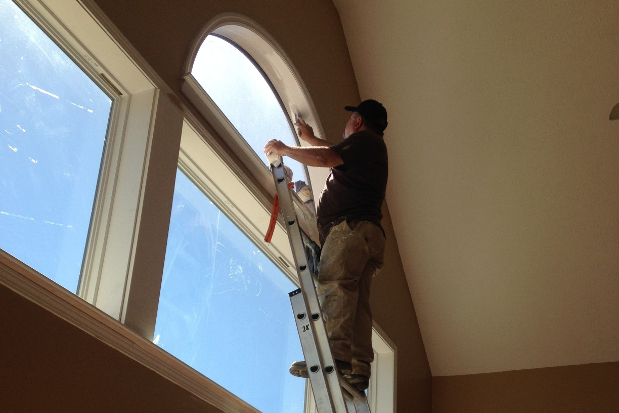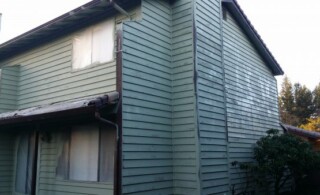
For any home improvement project to be successful, you need proper preparation. There’s nothing worse than skipping a crucial step, taking multiple trips to the store, or making stupid mistakes because you’re in a hurry. The job will go faster if you simply take some time and make a thorough checklist. This is especially true for interior painting. Many people get in a rush because it’s a boring job we want done quickly, so we end up slapping it on before taking the correct paint prep steps. If you want to avoid the chore, hire a professional painter who comes with their own supplies and training. But whether you hire a pro or do it yourself, make sure you follow this paint prep tutorial.
Interior Painting: The Tool Checklist
To avoid trips to the store, buy everything at once. Here’s a list of tools you’ll need:
- Applicators: Rollers are best for large areas of interior painting; however, you’ll also need small brushes. Buy an angled trim brush (2″) for baseboards and a smaller brush (1″) for window and door trim. A trim edger comes in handy: it looks like a sponge with little wheels that you set on the trim and slide along the edge with no mess. However, you still may need to touch up with a small brush. And don’t forget the paint pan and the screen to squeeze off excess paint: too much on the applicator makes the project tougher.
- Paint: Always purchase top-quality products. A gallon covers 400 square feet and you’ll want to apply two coats, so make sure you have enough. A primer coat is for covering dark colors with lighter ones but avoid expensive prices. Latex is often used in interior painting because it’s easy to clean. It’s available in flat and low-gloss (for less popular rooms) and also comes in glossy (for busy rooms that require routine cleaning). They also contrast well: glossy trim (since it tends to draw fingerprints) against a flat-finish wall creates a nice look. And oil-based paints are great for humid rooms since it has a hard, enamel finish.
- Other: Besides the essentials, here are a few other tools that you’ll need to have around beforehand: a stirrer, pry bar or screwdriver, respirator or mask, sponges and household cleaner, spackle and sandpaper, old clothes to wear, and of course, a drop cloth.
Ready to start your Interior Painting Project?
Find ProsProtective Paint Prep
Move everything away from the walls. Push the furniture to the middle of the room and cover it with a drop cloth. Remove paintings, pictures, and light switch covers. You may even want to eliminate the hardware (hinges or doorknobs) to create less hassle. If you’re coating the ceiling, get rid of light fixtures or at least cover them as best you can. Next, vacuum the floors, clean the corners, and cover the ground with a large drop cloth to avoid drips. As you paint, keep a window cracked for ventilation, keep away pets and kids to avoid mishaps, and create paths for easy maneuvering to nearby sinks or exits.
Taping a Room
It’s essential to mask off what can’t be moved. When taping a room, mask around radiators and trim. Put a piece of tape over electrical outlets for safety purposes. You could also tape the baseboards, but it may be easier to temporarily remove them from the wall (but make sure you’re able to re-install them later). And mask off the corners between the walls and ceiling: often referred to as “cutting in,” you may want to use a small angled brush to get into these crevices without incident.
Clean and Repair
Before you start the interior painting, make sure to wash the walls so as to remove any dirt, dust, or film that could prevent proper application. You can use a simple household cleaner for this task, just make sure to rinse afterwards and let the surface dry. Paint will not cover cracks or holes. Therefore, with some spackle or drywall compound, try to cover up imperfections and let them dry—and you may need to sand these areas afterwards in order to smooth out the surface. This is also a good opportunity to repair other problems: get some wood filler to fix holes in baseboards, re-caulk the edging, or maybe replace old-fashioned trim with new material.
 House Painting Tips
House Painting Tips  Creating a Kid’s Fantasy World With Themed Murals
Creating a Kid’s Fantasy World With Themed Murals  Lead Paint Common Sense
Lead Paint Common Sense  Painting Your Home Happy: How Color Choices Affect Your Mood
Painting Your Home Happy: How Color Choices Affect Your Mood  Removing Exterior Paint or Stain
Removing Exterior Paint or Stain 

My family owned a retail paint store for over 50 years and one of the biggest mistakes most people make in painting interior walls is trying to cover too much wall at one time. Rolling paint looks easy, but it is easy to make simple errors. Get plenty of paint on the roller and apply it vertically in a a “W” pattern, then fill it in. Next, go over the area horizontally, rolling over the whole area you have done vertically. Don’t do more than a 3′ to 4′ square. Move to the next area, either beside or below what you have done and repeat. Always do a bit of overlap between you areas, always trying to roll into the last section you did while it is still wet. Continue until the entire wall you are doing is finished. Do not take a break in the middle of doing a wall. If you paint over a dried area, you may get a double layer of paint and a “line” look on the wall.
When buying paint, look for a paint that has a high pigment content. If you are uncertain, ask the sales person. The greater the pigment content, the better coverage you will get. Cheaper paint contains more water and will need more coats. Two gallons of a cheaper paint may cost you more that one gallon of a better paint.
I am painting the kitchen cupboards in my rental house. I have put two coats of primer on and two coats of finish paint. The new paint on the cupboards is not hardening. Is there something I can put on them to make the paint harden.